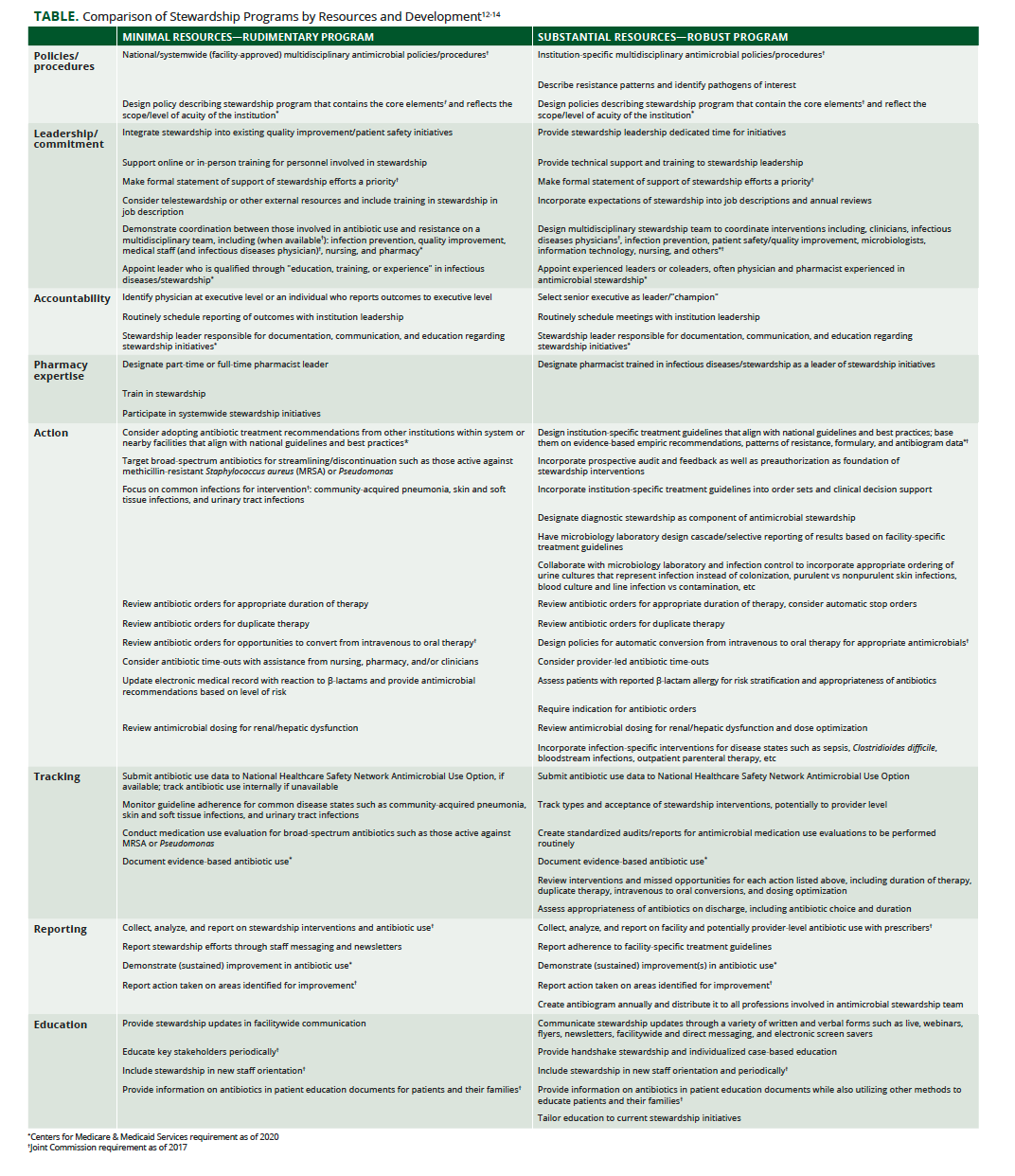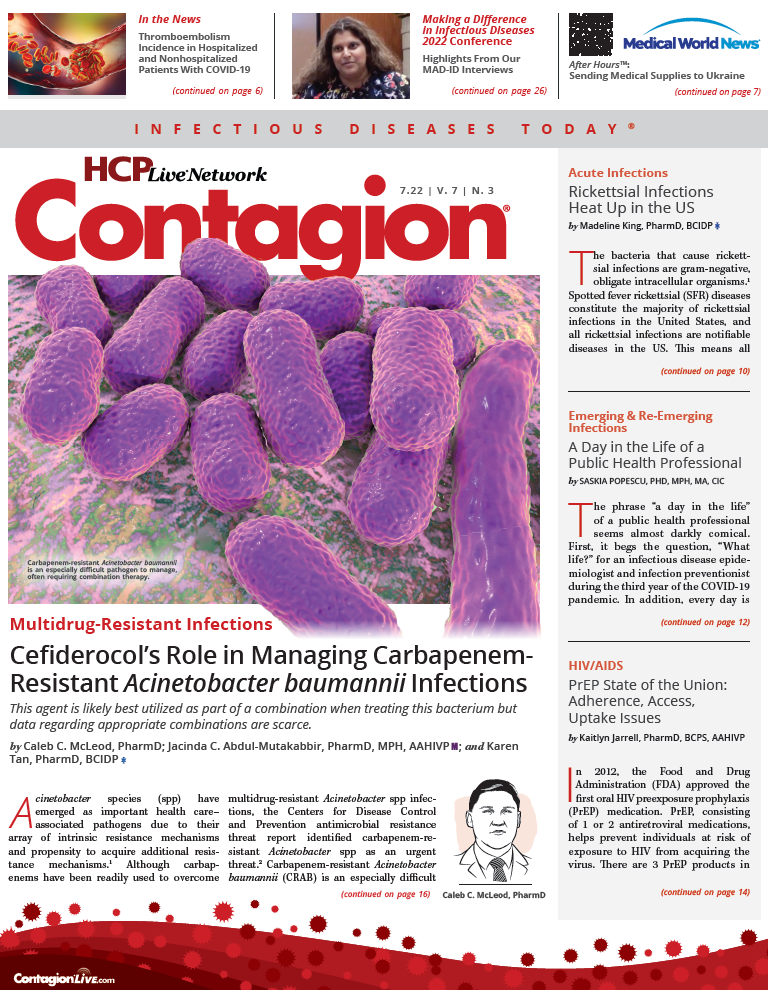Antimicrobial Stewardship: More Is Better
A robust stewardship program requires a comprehensive investment in technology and staff.
The first antimicrobial steward was the OG himself, Alexander Fleming. After discovering the antimicrobial properties of Penicillium notatum in 1928, he spent the next 20 years identifying the active component, determining the spectrum of activity, and establishing that penicillin would be safe for human consumption because it did not destroy leukocytes in human blood as did so many compounds he had tested before. This work earned Fleming the Nobel Prize in Physiology or Medicine in 1945, which he shared with Ernest B. Chain and Howard Florey. In his acceptance speech, Fleming told the inspiring story of penicillin. However, the mood changed in his closing paragraph:
“But I would like to sound 1 note of warning. Penicillin is to all intents and purposes nonpoisonous, so there is no need to worry about giving an overdose and poisoning the patient. There may be a danger, though, in underdosage. It is not difficult to make microbes resistant to penicillin in the laboratory by exposing them to concentrations not sufficient to kill them, and the same thing has occasionally happened in the body. The time may come when penicillin can be bought by anyone in the shops. Then there is the danger that the ignorant man may easily underdose himself and by exposing his microbes to nonlethal quantities of the drug make them resistant. Here is a hypothetical illustration: Mr X has a sore throat. He buys some penicillin to give himself, not enough to kill the streptococci but enough to educate them to resist penicillin. He then infects his wife. Mrs X gets pneumonia and is treated with penicillin. As the streptococci are now resistant to penicillin, the treatment fails. Mrs X dies. Who is primarily responsible for Mrs X’s death? Why, Mr X, whose negligent use of penicillin changed the nature of the microbe. Moral: If you use penicillin, use enough.”1
Although “the danger of the ignorant man” is a tempting tag line, clearer heads have identified antimicrobial stewardship as the more palatable description for those who have heeded Fleming’s warning.
Nearly 100 years after the discovery of penicillin and 77 years after Fleming’s warning of the ignorant man, antimicrobial stewardship programs are mandatory for acute and long-term care facilities that participate in Centers for Medicare & Medicaid Services (CMS) and that are accredited by The Joint Commission. In 2016, CMS requirements included policies and procedures to identify, report, investigate, and control infections and communicable diseases among residents, staff, and visitors. In 2017, the requirements added the presence of an antibiotic stewardship infection prevention program. The stewardship program must have antibiotic use protocols and a method of monitoring antibiotic use. An update in 2019 added some requirements (eg, naming a leader of the stewardship program and distinctly separating the program from infection control and prevention) but also relaxed other requirements and clarified several areas of confusion.2 For instance, the 2019 update allowed hospitals within a single health system to have a unified stewardship program as well as a single quality assessment and performance improvement content for infection prevention and the antimicrobial stewardship program.
Although CMS regulations do not dictate how hospitals complete all aspects of a stewardship program, they do require that all hospitals comply with a specific guideline or set of guidelines. One of the most commonly used is the Core Elements of Hospital Antibiotic Stewardship Programs created by the Centers for Disease Control and Prevention.3 The Core Elements guidelines initially were available in 2014 and served as a guide for implementation. The 7 core elements are hospital leadership, accountability, pharmacy expertise, action, tracking, reporting, and education. In 2014, 41% of hospitals reported that all Core Elements were in place at their institution. Self-reported adherence increased to 91% by 2020, likely due in part to the change in requirements in the 2019 update.4
Because the Core Elements were written with enough ambiguity and flexibility to allow for innovation and tailoring to the needs of each facility, this can result in varying degrees of effort and/or scope. Facilities that have not hired stewardship experts can check the boxes of Core Elements with relatively rudimentary practices. The practice of box checking by a stewardship program is often not the fault of program members but the outcome of limited resources. Limitations may include a lack of facility infrastructure for antimicrobial data extraction and communication, lack of stewardship expertise or specialized training, and/or inconsistent communication with an outside microbiology laboratory.5 The concern with box checking is that these efforts may not actually prevent the emergence of resistant pathogens and infections, the foremost goals of stewardship programs. Conversely, facilities that have invested in staff and technology can lead robust stewardship programs that are more likely to slow the progress of microbial resistance and improve patient outcomes.
A robust stewardship program requires investment in health information technology (HIT)6 such as electronic health record (EHR) systems, add-on clinical decision support systems (CDSS), clinical dosing tools, application-based technology, and learning management systems. EHR systems such as Cerner, EPIC, and Meditech allow all stewardship interventions to be performed within a single system. Add-on CDSS can collate data from multiple sources, produce intervention alerts, and allow intervention documentation separate from the EHR.7,8 Mobile applications containing facility-specific treatment pathways and antimicrobial use guidance have increasingly replaced printed booklets. A systematic review of 13 studies assessing the efficacy of stewardship smartphone applications found that guidelines were more frequently accessed and compliance with treatment guidelines increased after app implementation.9 Learning management systems are needed to deliver and track educational programs. The Core Elements note that education is most effective when paired with interventions and outcomes. A learning management system can track who has engaged in or completed educational initiatives and allows for comparative analysis both before and after the education and between participants and those who have not engaged in the education initiative. Many of these HIT support systems require capital investment but allow clinicians to make more stewardship interventions as well as assess the efficacy of these initiatives.
The other key area of investment when developing a robust stewardship program is staff.10 The CMS regulations do not address staffing requirements or ratios to accomplish their requirements. The Veterans Health Administration, the Antibiotic Stewardship Task Force, and the Clinical Pharmacy Practice Office collaborated to create a staffing calculator based on time-in-motion tracking studies from 12 facilities that assessed clinical interventions and program management activities.11 The calculated result was 1 full-time employee (FTE) per 100 occupied hospital beds. After excluding outliers, the group proposed 1 pharmacist FTE and 0.25 physician FTE per 100 occupied beds. They concluded that a minimum of 0.25 physician FTE and 0.5 pharmacist FTE should be allotted for hospitals with fewer than 100 beds. The accompanying TABLE12-14 includes options for external resources such as telestewardship and online training for programs without on-site staff.

CMS and The Joint Commission will likely continue to increase requirements in the acute care setting and expand antimicrobial stewardship requirements to all health care settings. In June 2022, The Joint Commission released updated requirements for hospitals and critical access hospitals, effective January 2023. Inclusion of criteria on technology and staffing required to meet these regulations should make the days of a single pharmacist running a stewardship program for a 600-bed hospital a thing of the past. And stories from these days will be added to the list of campfire stories of calculating vancomycin kinetics by hand and carrying a pager.
References
1. Sir Alexander Fleming Nobel Lecture. The Nobel Prize. Accessed June 1, 2022. https://www.nobelprize.org/prizes/medicine/1945/fleming/lecture/
2. Department of Health and Human Services. Medicare and Medicaid programs; regulatory provisions to promote program efficiency, transparency, and burden reduction; fire safety requirements for certain dialysis facilities; hospital and critical access hospital (CAH) changes to promote innovation, flexibility, and improvement in patient care. September 30, 2019. Accessed June 1, 2022. http://www.govinfo.gov/content/pkg/FR-2019-09-30/pdf/2019-20736.pdf
3. Centers for Disease Control and Prevention. Core elements for antibiotic stewardship. Updated April 7, 2021. Accessed June 1, 2022. https://www.cdc.gov/antibiotic-use/core-elements/index.html
4. Centers for Disease Control and Prevention. Hospital antibiotic stewardship. Accessed June 1, 2022. https://arpsp.cdc.gov/profile/stewardship
5. Kakkar AK, Shafiq N, Singh G, et al. Antimicrobial stewardship programs in resource constrained environments: understanding and addressing the need of the systems. Front Public Health. 2020;8:140. doi:10.3389/fpubh.2020.00140
6. Infectious Diseases Society of America. The Core Elements of Hospital Antibiotic Stewardship Programs 2019. Accessed June 1, 2022. https://www.cdc.gov/antibiotic-use/healthcare/pdfs/hospital-core-elements-H.pdf
7. Kuper KM, Hamilton KW. Collaborative antimicrobial stewardship: working with information technology. Infect Dis Clin North Am. 2020;34(1):31-49. doi:10.1016/j.idc.2019.10.005
8. Forrest GN, Van Schooneveld TC, Kullar R, Schulz LT, Duong P, Postelnick M. Use of electronic health records and clinical decision support systems for antimicrobial stewardship. Clin Infect Dis. 2014;59(suppl 3):S122-S133.
9. Helou RI, Foudraine DE, Catho G, Peyravi Latif A, Verkaik NJ, Verbon A. Use of stewardship smartphone applications by physicians and prescribing of antimicrobials in hospitals: a systematic review. PLoS One. 2020;15(9):e0239751. doi:10.1371/journal.pone.0239751
10. Greene MH, Nesbitt WJ, Nelson GE. Antimicrobial stewardship staffing: how much is enough? Infect Control Hosp Epidemiol. 2020;41(1):102-112. doi:10.1017/ice.2019.294
11. Echevarria K, Groppi J, Kelly AA, Morreale AP, Neuhauser MM, Roselle GA. Development and application of an objective staffing calculator for antimicrobial stewardship programs in the Veterans Health Administration. Am J Health Syst Pharm. 2017;74(21):1785-1790. doi:10.2146/ajhp160825
12.CDC Implementation of antibiotic stewardship at small and critical access hospitals. Accessed June 1, 2022. https://www.cdc.gov/antibiotic-use/healthcare/pdfs/core-elements-small-critical.pdf
13. ASM Final Rule. Accessed June 1, 2022. https://asm.org/Articles/Policy/2019/CMS-Final-Rule-on-Antibiotic-Stewardship-Programs
14. The Joint Commission. Approved: New Antimicrobial Stewardship Standard. Accessed June 1, 2022. https://www.jointcommission.org/-/media/enterprise/tjc/imported-resource-assets/documents/new_antimicrobial_stewardship_standardpdf.pdf?db=web&hash=69307456CCE435B134854392C7FA7D76&hash=69307456CCE435B134854392C7FA7D76

